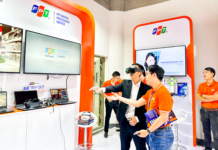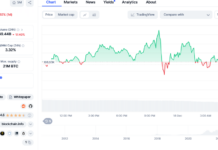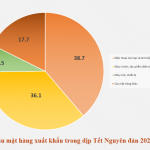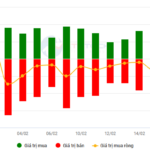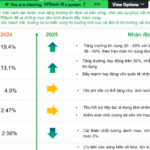The Ministry of Information and Communications is developing and seeking feedback on a draft circular regulating national technical regulations on Specific Absorption Rate (SAR) for handheld and body-worn wireless devices.
According to the Radio Frequency Management Authority, SAR is an indicator used to measure the rate of radio frequency energy absorption into the human body (unit: W/kg).
9 out of 10 ASEAN Countries Have Mandated SAR Management
The World Health Organization (WHO) has pointed out that when people use mobile phones, the body’s tissues can experience a heating effect due to the influence of radio frequency energy. Prolonged and continuous exposure may have adverse effects on human health.
The International Telecommunication Union (ITU) reports that SAR is related to the heating effect on the human body caused by close contact with radio frequency energy from handheld devices, typically mobile phones.
As SAR can impact human health, many international organizations have conducted research and established standards to mitigate its effects.

According to the Radio Frequency Management Authority, a survey of 52 countries in Europe, the Americas, ASEAN/Asia, Australia, and Africa revealed that 43 countries mandate SAR management. In the ASEAN region, 9 out of 10 countries have made it compulsory.
Typically, the objects of SAR management are wireless devices used in close proximity to the human body, especially at distances of less than 200 mm. Most countries regulate mobile phones, and some also include devices such as walkie-talkies, tablets, laptops, mobile Wi-Fi routers, and smart watches.
Countries in Europe, Japan, Australia, the US, Canada, and Indonesia, among others, exempt low-power wireless devices from SAR measurement requirements (typically below 20 mW).
There are specified SAR limits for the head and torso region, the limbs, and the whole body.
In Vietnam, Article 14 of the Law on Radio Frequency stipulates the management of radiation safety for wireless devices before they are circulated in the market or used. SAR management is one aspect of wireless radiation safety management.
However, according to the Radio Frequency Management Authority, Vietnam has not yet made SAR management mandatory and does not have a national technical regulation on SAR for handheld and body-worn devices.
In reality, the Ministry of Science and Technology has issued the Vietnamese Standard TCVN 3718-1:2005, “Management of safety in radio frequency radiation – Part 1: Maximum exposure levels in the frequency range from 3 kHz to 300 GHz.” This standard, issued in 2005, is outdated and not mandatory.
The standard sets SAR limits at 1.6 W/kg for the head and torso, 4 W/kg for limbs, and 0.08 W/kg for the whole body. The management objects include mobile and portable devices in the frequency range of 0.1 MHz to 2500 MHz.
Proposal to Expand the Scope of Devices
The draft regulation applies to devices with a transmission power of over 20 mW used within 200 mm of the human body. In addition to mobile phones, which were the main subject of SAR management in the previously consulted draft, the scope has now been expanded to include tablets and laptops, as listed in the Ministry of Information and Communications’ circular on product categories with potential safety hazards.
Referring to the practice of testing and evaluating SAR compliance for wireless devices in France, from 2012 to September 2023, the managing authority found that about 5% of the tested samples did not comply with the SAR limits, mainly in the category of mobile phones.
Among devices used in close proximity to the human body, mobile phones are the most commonly used in Vietnam. For managing exposure to EMF from mobile base stations (BTS), strict regulations are already in place, requiring certification before use.
Therefore, the drafting agency proposes a conformity certification for mobile phones and a conformity declaration for the remaining devices within the scope of the draft regulation.
Regarding domestic measurement capabilities, the Radio Frequency Management Authority surveyed several units in Vietnam and found that one domestic manufacturer had the facilities and capacity to measure SAR for mobile phones according to internal standards, applicable only to their products. This unit has no plans to offer measurement services for devices from other brands or following different standards.
The measurement room of the Radio Frequency Management Authority and some other measurement rooms in Vietnam currently have some components that can be used for SAR measurement, such as the anechoic chamber and the radio communication simulator.
Overall, the domestic capacity for SAR measurement for mobile phones is not immediately available, and units will need time to invest and procure equipment after the official regulations are issued by the Ministry of Information and Communications.
In foreign countries, there are over 100 testing laboratories in nations like the US, Canada, Japan, South Korea, China, the UK, and Australia that are capable of measuring SAR, many of which are in countries that have Mutual Recognition Agreements (MRAs) with Vietnam.
The draft is expected to take effect on July 1, 2025. From July 1, 2026, mobile phones must comply with this regulation before being circulated in the market, and wireless devices within the scope of the regulation must also comply before being circulated.
Businesses, organizations, and individuals can choose to conduct measurements according to this regulation to serve conformity certification and declaration of conformity from July 1, 2025.











